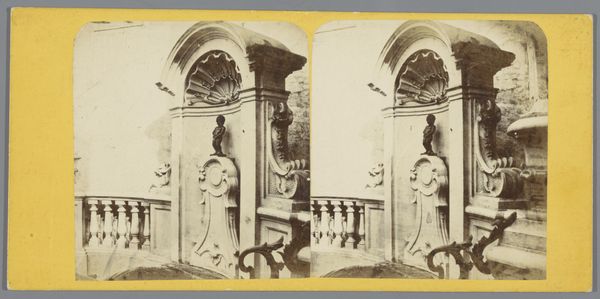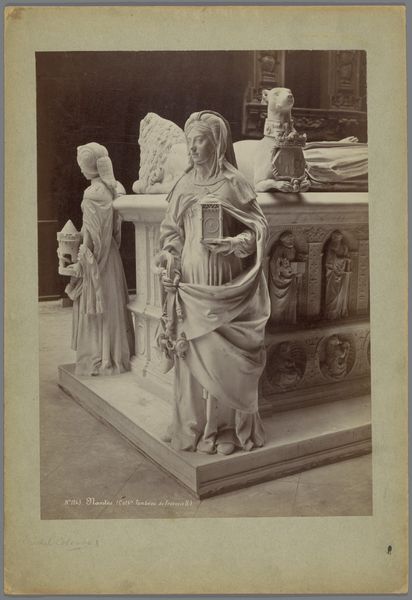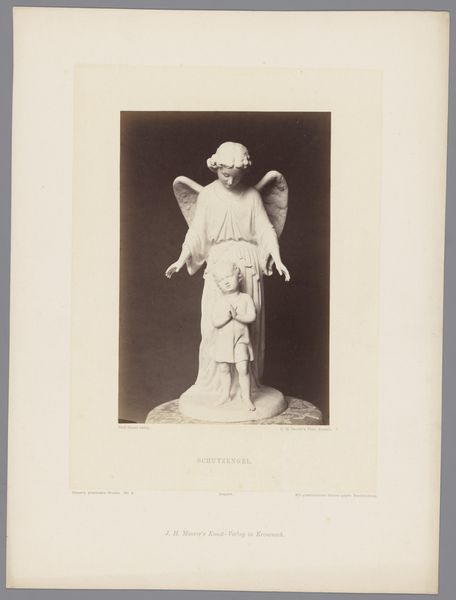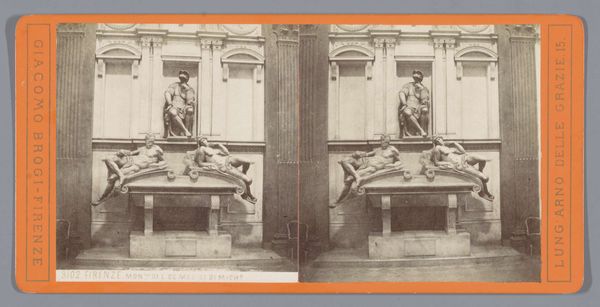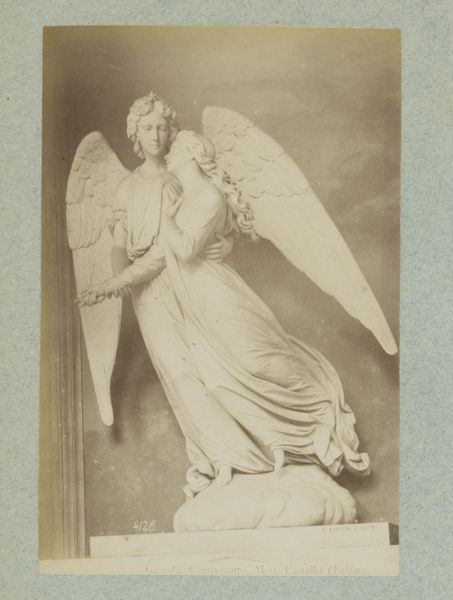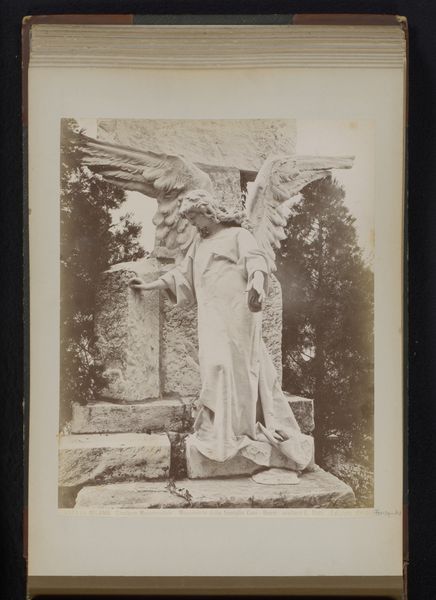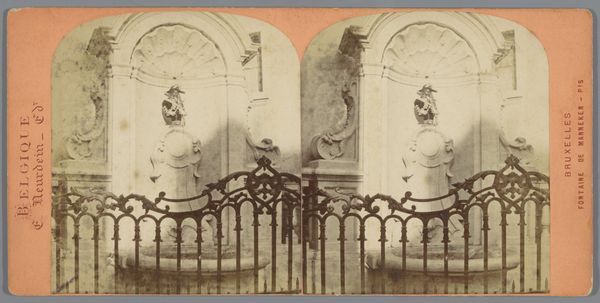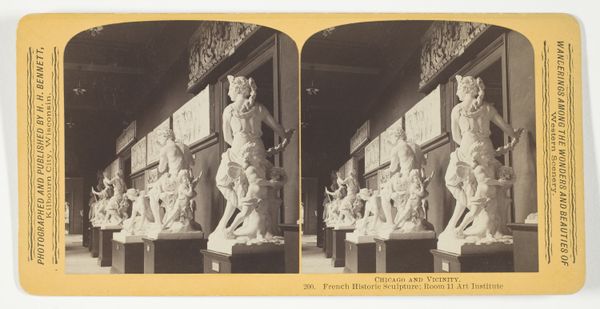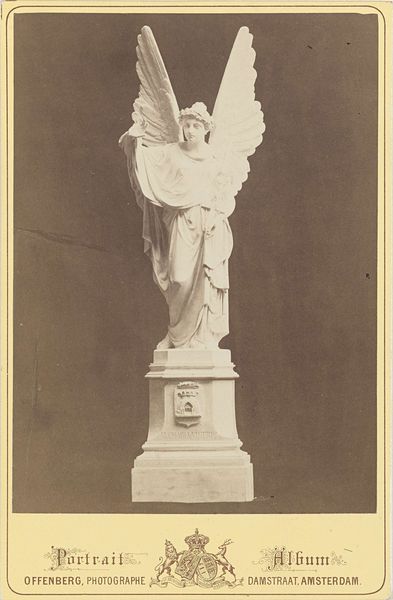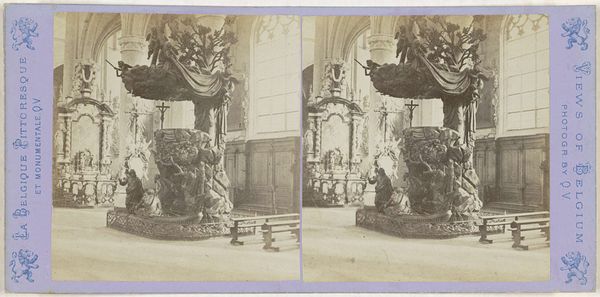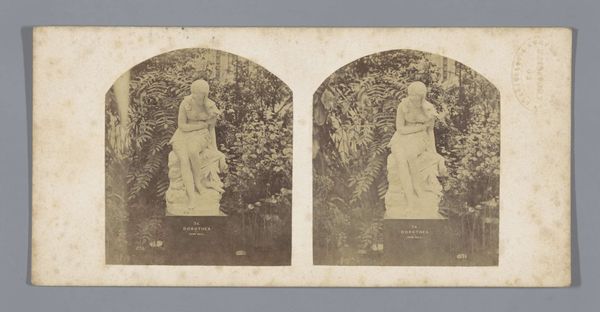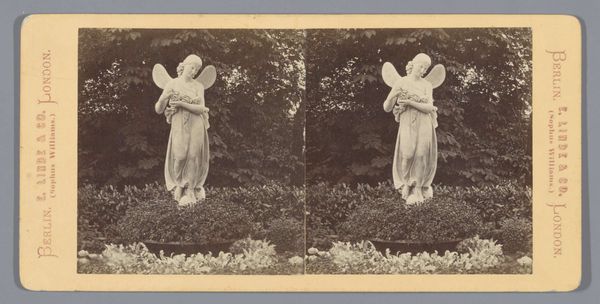
mixed-media, photography, sculpture
#
mixed-media
#
photography
#
sculpture
#
history-painting
#
academic-art
Dimensions: height 86 mm, width 178 mm
Copyright: Rijks Museum: Open Domain
Editor: This is a photo, "Sculptuur van Hebe op de Wereldtentoonstelling van 1873," dating back to 1873. It looks like it uses a combination of photography and sculpture in mixed-media. What jumps out to me is the eagle and the seated figure. It has quite a dramatic and theatrical flair, and a stark simplicity in the black and white print. What do you see in this piece? Curator: The starkness you point out draws me in. I see not just Hebe, the Greek goddess of youth, attended by an eagle, likely representing Zeus, but a cultural moment frozen in time. The sculpture itself evokes classical ideals, the timeless beauty and serenity sought after in Academic art. But beyond that, the choice to display it at the World's Fair signals a statement of power and aspiration in an era defined by nationalism. Look at how Hebe is positioned— almost subservient under the wing of the eagle. Editor: So the arrangement speaks volumes, implying the eagle is some symbol for power over youth? How does this extend from the historical setting, as this appeared at the World's Fair? Curator: The eagle is not just power *over* youth, but perhaps more profoundly, its *protector*, it carries a strong national symbolism that can be a direct claim of authority and perhaps even providence. Consider this from the point of view of 1873, only two years after the unification of Germany into an empire. This piece appearing at the world stage acts as a symbol of ambition and also national identity, and possibly a vision of the future as guided by classical virtues and modern aspirations. Editor: That's fascinating. So, it’s not just about a classical story, but how that story was used to convey messages of cultural identity and national ambition at the time? Curator: Precisely. We learn to unravel cultural threads encoded within imagery when looking to the past. Images continue to evoke strong emotion even now, by reinterpreting past mythologies and histories. Editor: This photograph gives an amazing lens into the symbolism behind the artwork and cultural climate of the era. I hadn’t considered how national pride could be so visibly proclaimed within a piece displayed for all the world. Curator: Absolutely! When we truly interpret artworks, history and memory become as present as brushstrokes and pigment.
Comments
No comments
Be the first to comment and join the conversation on the ultimate creative platform.
